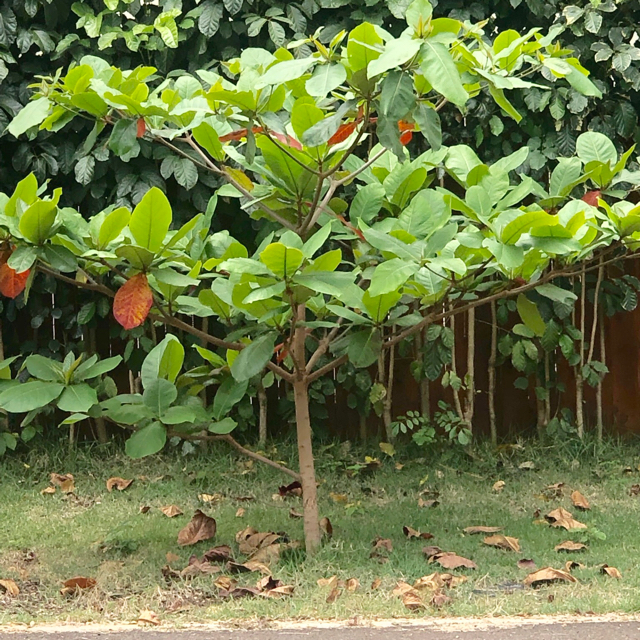Almond Tree

Scientific name: Prunus dulcis
Other Common Names: Almendras (Spanish), amandes (French), mandorle (Italian), Mandeln (German), badaam (Indian), لوز (lawz in Arabic) 杏仁 (xìngrén in Mandarin Chinese) and アーモンド (āmondo in Japanese)
The almond tree, Prunus dulcis, is a deciduous tree in the family Rosaceae that is grown for its edible seeds (nuts). The tree has brown or gray bark and either an erect or weeping growth habit, depending on the variety. The trunk can reach 30 cm (12 in) in diameter.
Almond leaves are 7.5–13 cm (3–5 in) long with a serrated edge and grow alternately on the branches. The tree produces white to pale pink flowers and hairy green fruits that are oblong in shape. The fruit is a drupe, containing a single seed. The seed is protected by a hard brown shell.
At maturity, the flesh of the fruit becomes leathery and splits to reveal the nut inside. Nuts generally measure 3.5 to 6 cm (1.4–2.4 in) in length. Almond trees can reach heights between 4 and 10 m (13 and 33 ft) and have a commercial lifespan of between 30 and 40 years.
Almond may be referred to by variety and this includes bitter almond. Almond nuts are generally long and may also be referred to as sweet or bitter almonds, depending on the variety. They originate from wild species found in Central and Southwest Asia.